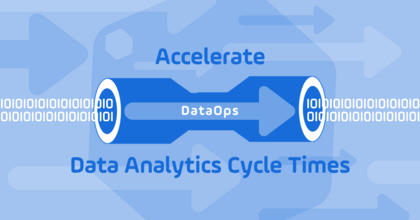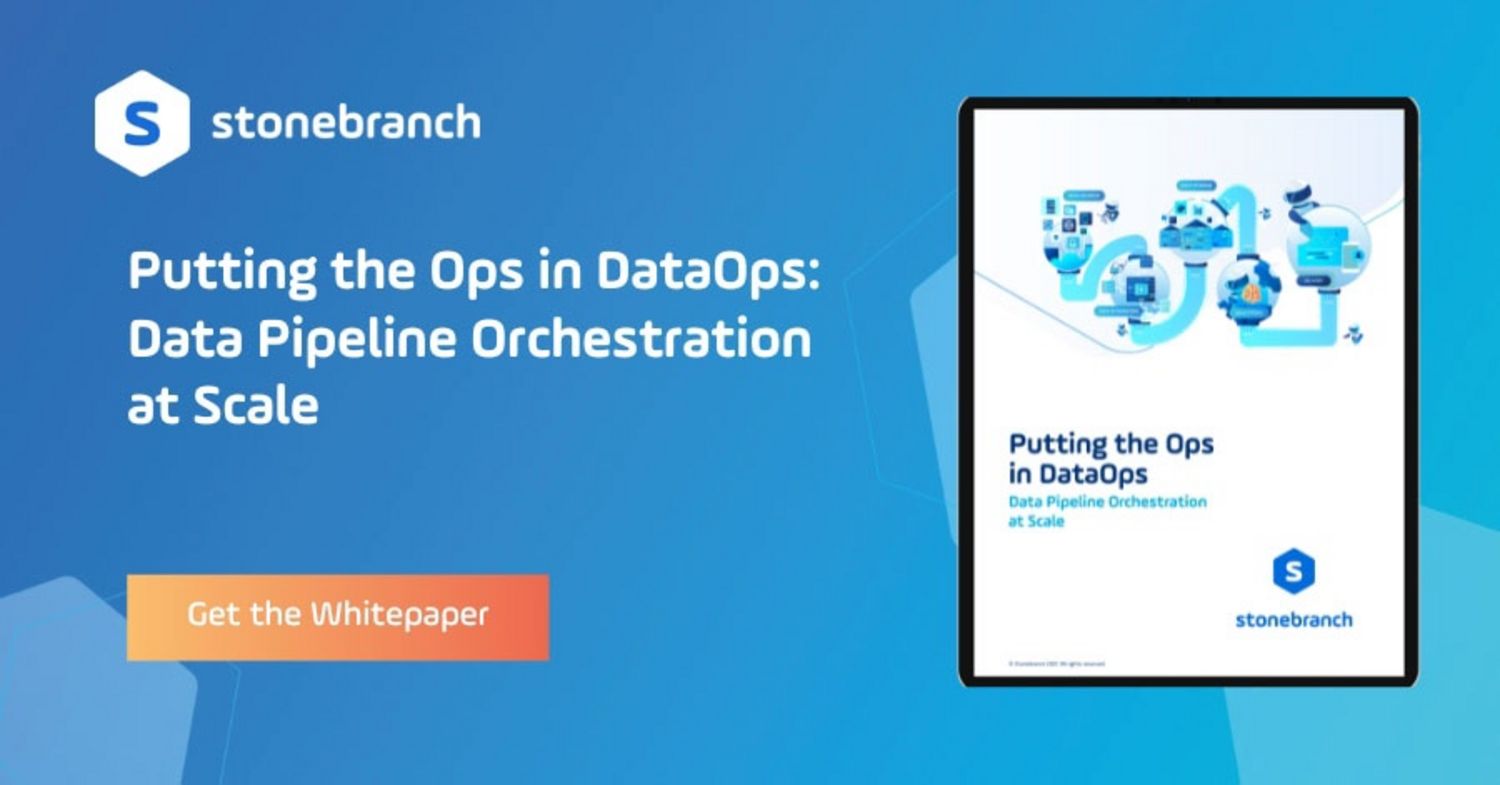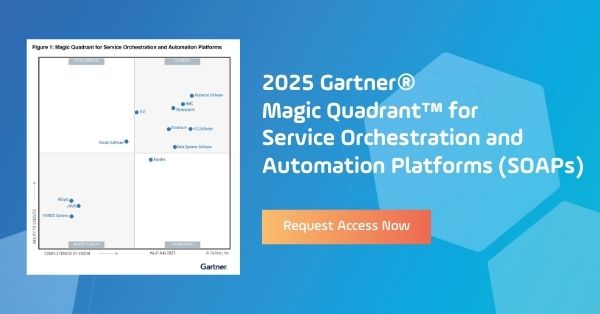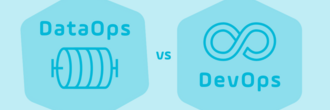Use DataOps to Reduce Data Analytics Cycle Times
DataOps brings together data architects, data scientists, IT managers, and developers — and incorporating dev/test/prod lifecycles into data cycles — to reduce the cycle time of data pipeline management and enables business users to achieve their goals.

In this article, you’ll learn how to apply DataOps methodologies to reduce data pipeline management cycle times.
Plenty of data teams put in long hours creating custom pipelines only to find that maintaining them is an even bigger hassle. Fixes can be complicated and temporary, and the end-users are the ones pointing out the problems when their dashboards and analytics don’t add up or the service breaks altogether.
Exacerbating the issue is the inevitable delay: a business user requests metrics from an analyst, the analyst requests updated data from an engineer, the engineer refreshes the pipeline and passes data back to the analyst, and the analyst processes the information and produces visuals for the business user.
By the time the original request is met, the now-outdated data might range from slightly misleading to completely irrelevant, and generating these dubious insights has consumed valuable time. Or worse yet, the person requesting the data missed the deadline issued by his/her boss.
DataOps offers a better way.
Reduce Data Analytics Cycle Times with DataOps
If you’ve made the intuitive connection between DataOps and DevOps, you’re on the right track.
Fueled by automation and collaboration between development and IT operations teams, DevOps departed from the traditional waterfall development methodology in favor of a process of continuous improvement and iteration. The result was groundbreaking, and it’s allowed organizations to slash the software release cycle from months or even years to mere days in many instances.
DataOps is a similar methodology that requires a mindset shift applied throughout your people, processes, and application stack.
People: What a DataOps Team Looks Like
DataOps brings cross-functional roles together into one team aligned to a singular goal — enable a data-driven organization. Together, these people work hard to reduce data analytics cycles from weeks to days, striving toward a goal of real-time data delivery. The DataOps team includes:
- Data architects: strategic direction and technical leadership
- Data engineers: data pipelines development and maintenance
- Data scientists: data analysis and visualization
- Data analysts: data interpretation and insights
Processes: How DataOps Implements DevOps Methodologies
Approaching data using DataOps methodologies means achieving continuous integration and continuous deployment (CI/CD) through dev/test/prod lifecycle management. According to the Eckerson Group, DataOps actually has two distinct lifecycles:
- CI/CD for data science and analytics
- CI/CD for data pipelines
Both lifecycles require orchestration to automate and accelerate cycle times.
Application Stack: How to Put the Ops in DataOps
For true orchestration to occur, data-focused leaders working in hybrid IT environments require a macro-view of their own complex automation workflows (regardless of where the various tools reside), a way to securely manage file transfers between environments, and a centralized command center to visualize and manage it all.
For organizations that need to apply DataOps methodologies, service orchestration and automation platforms (SOAPs) have become the go-to solution. SOAPs, a category coined by Gartner, are an evolution from traditional workload automation (WLA) tools. These orchestration platforms help:
- Centralize control across your data toolchain by integrating with each of the tools and source systems used along the data pipeline.
- Enable cross-functional collaboration by bringing disparate teams together on a common, centralized automation platform.
- Help enterprises achieve continuous integration and continuous deployment (CI/CD) of their data pipelines with in-built dev/test/prod functionalities.

Bringing It All Together: People, Processes, and Platforms
Once you’ve nailed down the people, processes, and platforms, it’s time to operationalize. The responsibilities of the core DataOps team members bring everything together to scale pipeline development and accelerate data cycle times. Each of the team members below require a platform to centrally collaborate on their respective part of building, maintaining, or using data.
Data Architect
Data architects provide strategic direction and technical leadership. They define the data architecture framework and translate business requirements into technical specifications. They oversee:
- Data architecture, standards, and processes
- Data models
- Governance
Data Engineer
Data engineers build and maintain the data pipelines. They operationalize data infrastructure and delivery using dev/test/prod methodologies. They’re responsible for:
- DataOps operating environment
- Data architecture construction and development
- Data deployment
Data Scientist
Data scientists analyze and visualize the data. They develop advanced predictive models and apply statistical analysis. They manage:
- Predictive modeling
- Machine learning
- Dashboard development
Data Analyst
Data analysts interpret data for insights. They analyze historical data and report on insights for model ideation. They handle:
- Data collection and preparation
- Statistical analysis
- Dashboard deployment
Service orchestration and automation platforms become the central platform to control and automate the processes required to keep their data moving . The most powerful SOAPs connect to any of the disparate tools in the data pipeline and execute tasks directly in those tools — all from the SOAP itself.
In addition, these platforms allow data teams to architect their data pipelines with visual drag-and-drop workflow designs — and apply DataOps lifecycle methodologies. Data engineers, in particular, appreciate the ability to manage the day-to-day via dashboards, SLA reports, and proactive alerting.
Summary
Scrambling to pull together a successful data pipeline can be exhilarating… the first time or two. But it isn’t long before the requests for new pipelines overwhelm your team. Timelines tighten from months, to weeks, to days, to hours. Ongoing maintenance is barely an afterthought.
When the scramble becomes more exhausting than exciting, it’s time to orchestrate a more sustainable approach: DataOps.
Curious to learn more? Follow the journey of Jonathan, a data team lead, as he discovers how DataOps can help him deliver data to business users in real-time. Download the whitepaper Putting the Ops in DataOps: Data Pipeline Orchestration at Scale to read his story.
Start Your Automation Initiative Now
Schedule a Live Demo with a Stonebranch Solution Expert





